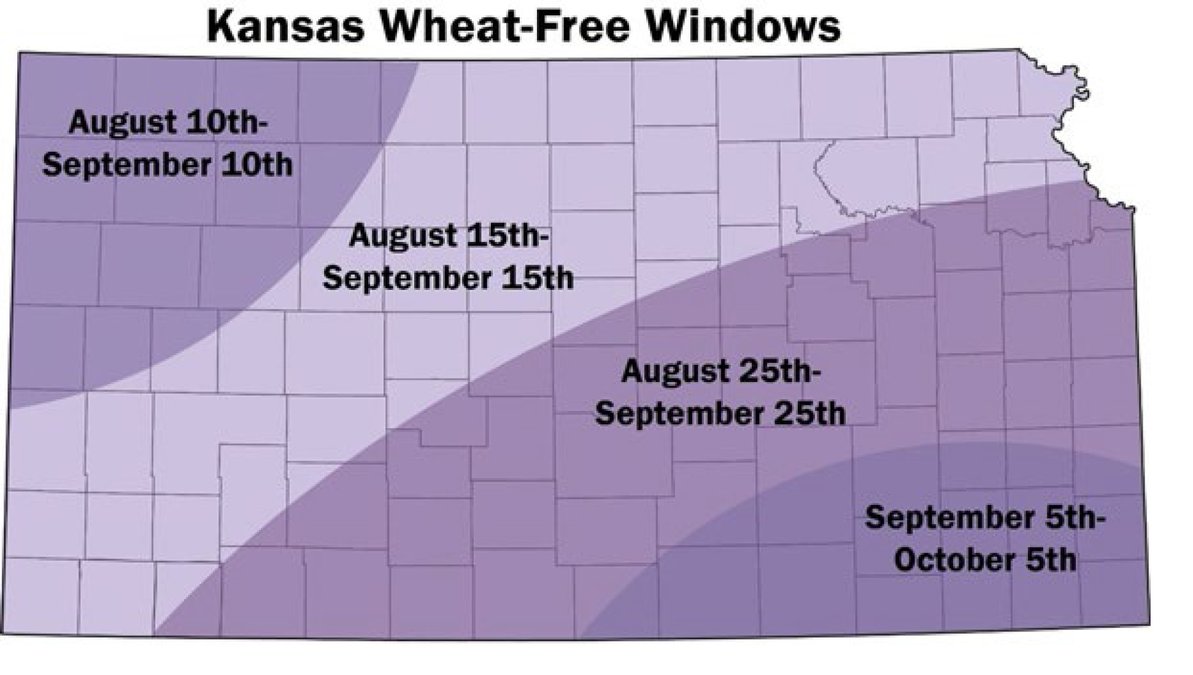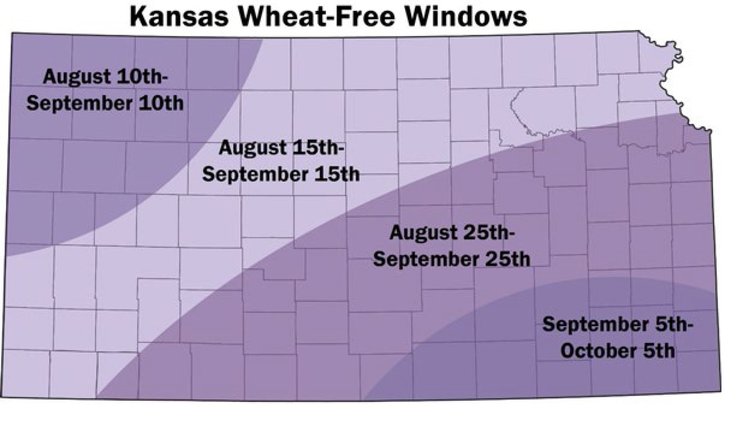This article is the first in a multi-week series on wheat streak mosaic complex management to address the 2025 outbreak by Kelsey Andersen Onofre, K-State Extension Wheat Pathologist.
Wheat streak mosaic complex devastated many wheat fields across central and western Kansas in 2025. The conditions that favored this outbreak were covered in a previous article in May – High levels of wheat streak mosaic virus in parts of KS.
Wheat streak mosaic complex consists of a complex of three viruses: wheat streak mosaic virus, Triticum mosaic virus, and High Plains wheat mosaic virus. When two or more of these viruses are present in the same field, yield losses can be synergistic. As a reminder, the wheat streak mosaic complex of viruses is vectored by the tiny wheat curl mite. We know that mite populations were very high in the state at the end of the 2025 season. Research has reported that up to 500 curl mites can be found on a single healthy wheat head, which can conservatively translate to more than 1 billion mites per acre.
Curl mites can only survive 4 days without a living host, so when the wheat crop dries down, mites will work their way to the top of plants and assume an “upright posture” to help them disperse by wind. Curl mites don’t fly, and they walk very slowly, so dispersal by wind is their only way to move in the landscape. The period when mites are migrating off the mature wheat crop has been referred to as the “mite rain” period, as billions of mites are showering down in the landscape. When conditions are very windy, mites can be passively dispersed more than 10 miles. The highest risk place for curl mites to survive the summer is volunteer wheat that is present at or around harvest.
Conditions that favor grain shattering, such as preharvest hail or harvest delays due to windy storms (such as much of the 2025 Kansas wheat harvest), can increase the presence of pre-harvest volunteers. If mites are allowed to survive on this volunteer wheat or alternative hosts until the fall-established wheat crop is planted, there is a high likelihood of another outbreak in 2026. As a reminder, there are no recommended insecticides for wheat curl mite management.
Volunteer wheat control will be essential in 2025
There are two critical periods for volunteer control: immediately after harvest and prior to fall planting. Volunteer wheat present at harvest is the perfect place for populations of curl mites to migrate as the crop dries down. Controlling this volunteer wheat as soon as possible will help dilute the mite populations heading into the remaining summer months. The second most critical window is pre-planting, as mites present at this time will migrate directly to the 2026 crop.
We are expanding the recommendation for volunteer wheat control to include regional recommendations for wheat-free windows. These windows include periods 30 days prior to the start of the optimal winter wheat planting window by zone in Kansas. As the wheat curl mite is a community pest, coordinated breaks in volunteer wheat will have the highest likelihood of lowering local and statewide mite levels moving into our 2025 optimal planting date periods. Volunteer wheat that emerges after the fall crop is already established poses a lower risk as a green bridge and can be thought of in a similar way as the fall crop. Fall wheat planted early during wheat-free windows risks bridging wheat curl mite to the fall-established crop.
Stacy Campbell is an Agriculture and Natural Resources agent for Cottonwood Extension District. Email him at scampbel@ksu.edu or call the Hays office, 785-628-9430.





